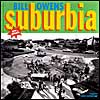In 1983 after working several years as a photojournalist, publishing a series of books and producing two children, Bill began his brewing career. He established Buffalo Bill’s, one of the nation’s first Brew Pubs which he operated until he sold it in 1994. Artifacts from Buffalo Bill’s Brew Pub were acquired by the Smithsonian Institute and sit alongside Owens’ photographs previously collected by the Smithsonian American Art Museum. He has received a Guggenheim Fellowship and two National Endowment for the Arts grants.
From 1993 to 1995 Bill published BEER the magazine. Moved by the spirits Bill went on to found The American Distilling Institute (ADI), the oldest and largest organization of small batch, independently owned distillers in the United States which he continues to lead and cultivate.
Astonishingly, all the while Bill has continued to make, exhibit and sell his photographs. His photographs have been exhibited internationally and are in many collections including the Museum of Modern Art, Berkeley Art Museum, Los Angeles County Museum of Art, San Francisco Museum of Modern Art, Los Angeles Museum of Contemporary Art, San Jose Museum of Art and the Getty Museum in Los Angeles.

Bill Owens (Jamaica 1964-66)
Bill Owens took the photo above at the infamous Altamont rock festival in December 1969, thirty-five years after the ban on Ulysses was overturned. It is a powerful visual representation of the era’s radical shift towards personal freedom and self-expression. This image encapsulates the essence of the countercultural movements that emerged during this time, driven by a desire to break free from conventional norms and embrace new forms of liberty.
The 1960s were marked by a significant departure from the conservative values of the previous decades. Festivals like Altamont and Woodstock became iconic symbols of this transformation, where music, art, and personal expression converged in a celebration of freedom.
Owens’ photograph, with its unabashed depiction of nudity in a public space, illustrates how the pendulum of freedom had swung far to the left. It showcases an era where people felt liberated to express themselves without fear of judgment or repression. This image is not just a snapshot of a moment, but a reflection of a broader societal change where individuality and freedom of expression were fiercely defended and celebrated.



I attended the Altamont music festival, but didn’t see the nude guy in Owen’s photo. The image I remember most occurred after the concert ended, late at night.
There was a freeway entrance next to the concert site, and thousands of participants streamed up the ramps, mostly headed to hitchhike on the west-bound lanes, gathering under the bright-white freeway lamps. As more and more people streamed up from the concert bowl, those ahead of them were pushed out onto the lanes. Cars slowed, slowed more, and traffic came to a halt. But there was no angry horn honking, no fingers flipping at hippies.
Rather. drivers began rolling down their windows and holding up fingers as they shouted out their destinations. “San Jose,” a driver would shout and hold up four fingers, meaning he had room in the car to take 4 hitchhikers. People began to sort themselves accordingly, and the throng slowly found rides. I got a ride all the way back to Fr. Ord.
It was a social phenomenon unlike any I’ve seen before or since. It’s hard today to imagine random drivers stopping in the middle of the night to fill their cars with drugged-up hippies and scruffies, but such were the times, shades of mellow that for a brief period fueled trust and hope.